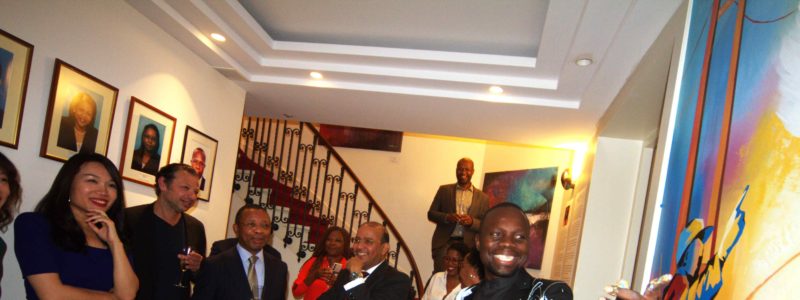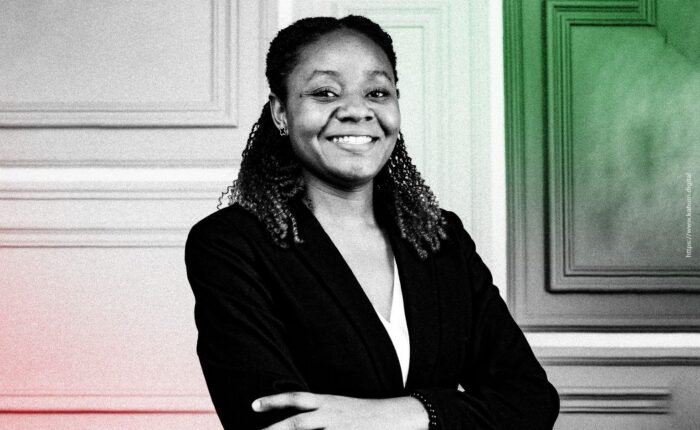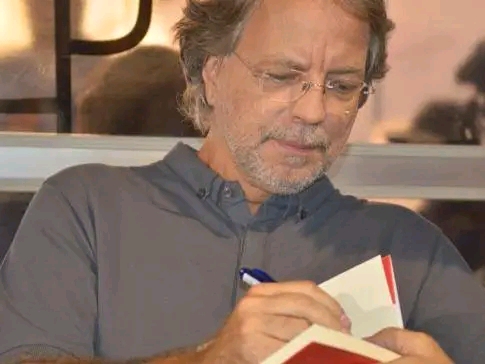
Walking through the avenues of Maputo and a bit through some cities of this vast Mozambique, there are walls that stand out from the majority, revealing a vibrant color palette and symbolic representations that tell stories or evoke joy and identities. These walls, whether they are market and school enclosures or building facades, even on stair steps, as is the case in the capital city of Mozambique, are canvases where Sebastião Coana creates art and social discourse. In the city center of Maputo, there is a popular market where workers from various sectors and classes converge to have lunch. This space, located near one of the country's most imposing monuments, the gigantic Statue of the first President of Mozambique, Samora Machel, in Independence Square, bears the responsibility of primarily feeding both the formal and informal economy, perhaps explaining its name: People's Market. There, Sebastião Coana's work stands out, providing an ideal opportunity for contemplation and enjoyment during the noon break and energy recharge.
Consider the setting of this artwork. Placed in the midst of a historic area, surrounded by landmarks such as the Municipal Council building, the Iron House, the National Museum of Art, and two cultural centers, not to mention Radio Mozambique, etc. Amidst all that, I introduced contemporary art that ignites itself, but with colors that offer people a therapy of hues. Many of the individuals in this area are concentrated or stressed as they come from offices. So, I created a color therapy to distract them, while drawing them towards the artwork. It has a similar effect on the stairways of Maxaquene."

Now, let's talk about the stairways that connect the downtown area to the Museum district. But before that, let's explore further down the city. Traveling along Samora Machel Avenue towards the lower part of the city, heading towards Bagamoyo Street and Consiglieri Pedroso, the old buildings have been rejuvenated or enlivened with the artist's vibrant brushes and colors. Within them are stories of people grappling with life's challenges, dealing with the weight of hardships, and seeking a path away from delinquency or danger.
No one wanted to walk through those streets. However, after the paintings, people started frequenting them to take photos, musicians created several high-quality international videos against those murals. So, the aesthetic enhancement of those streets was so significant that it attracted tourism. It's an achievement, a feeling of having done something that benefits people," Coana said about his work in the famous 'hot zone,' the center of bars, cabarets, and the sex trade.

You can continue along 25th of September Avenue towards the famous barriers of Maxaquene, the new upscale area of Maputo, where buildings like JAT and the headquarters of major companies, from telecommunications to banking, to embassies and oil companies, are located. But what takes us there is the artistic work that transformed an inhospitable place, appearing abandoned and marked with reported dangers of robberies and other types of violence. Despite this, it serves as a vital immediate link between the lower and upper parts of the capital. On the stairways of Maxaquene, amid the steps, the color pink shines in the twilight, giving another life, confidence, and style to the 'pilgrims.' It's safe to say that, more than a statement, there is evidence that art transforms.
Recently, in October, Sebastião Coana's art was honored by the Divine French Academy of Arts, Letters, and Culture for his work 'with children, women, and street youth in Mozambique, through the art of painting.
Even before this recognition, Coana had already defined his goals as a social actor. 'I think beyond Sebastião Coana. I am indeed the mentor, but my cause is to involve the youth, give them a craft that can serve as a source of income, and set them on the right path in life. I aim to impart my knowledge so that they can improve their lives and also transform the communities they live in. We are talking, for example, about mural painting, but to create a mural, I need to involve others.' Coana asserts that these 'others' are young people without obligations or in vulnerable life situations due to extreme poverty. This not only engages them in something grand but also, despite their conditions, empowers them by providing them with a profession – that of a painter – or involves them in other emerging painting projects.
Today, Sebastião Coana's work bears the face of Mozambique and continues to reach more areas, from Maputo to Rovuma. Meanwhile, in parallel, his artistic work on canvases travels the world.







